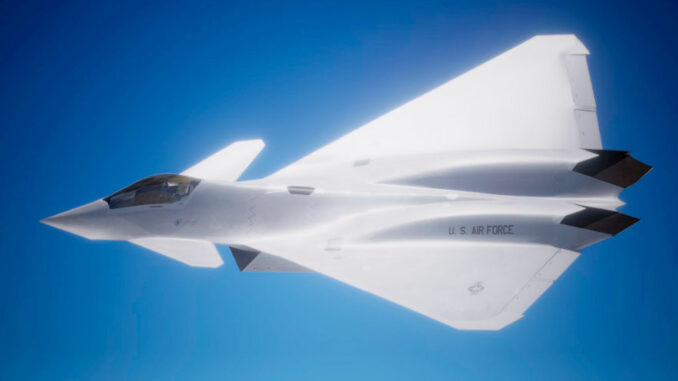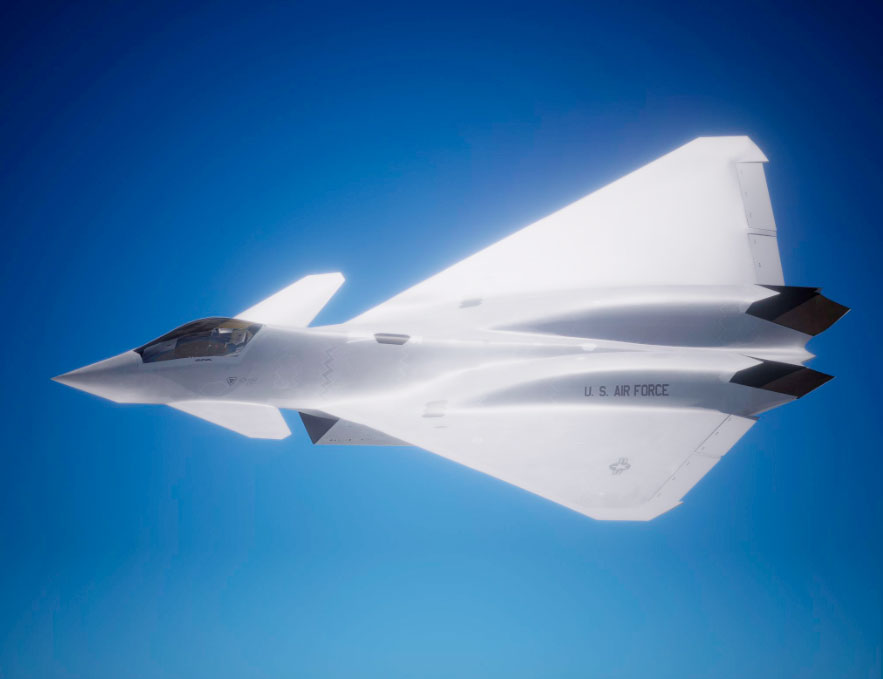
Boeing’s F-47 contract for NGAD heralds a U.S. pivot to isolationism, threatening the F-35 program and aerospace exports. Technical analysis and impacts.
The F-47, a sixth-generation fighter developed by Boeing for the Next-Generation Air Dominance (NGAD) program, has been selected by the U.S. Air Force, signaling a major strategic shift. Paired with an upcoming Navy contract for the F/A-XX, it prioritizes advanced technology but may diminish the F-35 program by Lockheed Martin, a cornerstone of U.S. global engagement. The F-35, designed for allied interoperability, accounts for roughly 33% of U.S. aerospace exports, but international orders face risks from trade tariffs and eroding trust in Washington. The F-47 and F/A-XX, with no export prospects, suggest an isolationist stance, with funds redirected to missile defense and nuclear weapons. This shift could shrink the U.S. aerospace trade surplus, valued at €80 billion in 2024, and weaken America’s global military influence.

F-47 Contract: A Technological Leap
The contract awarded to Boeing for the F-47, a core component of the NGAD program, marks a significant advancement in U.S. air capabilities. The F-47 is a sixth-generation fighter, integrating cutting-edge technologies such as advanced propulsion, enhanced weapon systems, superior connectivity, and improved stealth. Unlike fifth-generation fighters like the F-35, the F-47 is engineered for contested environments, boasting an estimated 3,000 km range and the ability to coordinate with autonomous drones, known as Collaborative Combat Aircraft (CCA). The initial contract is valued at €18.5 billion, with total program costs projected to exceed €185 billion over its lifespan.
Boeing outbid Lockheed Martin, the historical leader in stealth fighters with the F-22 and F-35. This choice reflects a push to diversify suppliers and foster innovation. For instance, the F-47 offers a maximum speed of Mach 2.5 and a payload capacity of 10 metric tons, surpassing the F-35’s 7 metric tons. However, developing these technologies demands substantial investment, straining the defense budget, set at €925 billion for 2026. This prioritization could divert funds from other programs, notably the F-35, which has seen its annual production for the U.S. Air Force cut to 42 units in 2025, down from a target of 110 units.
Impact on the F-35 Program
The F-35 Lightning II, manufactured by Lockheed Martin, has been a cornerstone of U.S. military strategy since its introduction in 2015. This multirole fighter serves the U.S. Air Force, Navy, and Marine Corps, with three variants: F-35A (conventional takeoff), F-35B (short takeoff and vertical landing), and F-35C (carrier operations). Unit costs range from €76 million for the F-35A to €100 million for the F-35B, with the program’s total cost estimated at €1.95 trillion over 94 years. Approximately 1,100 aircraft have been delivered, with 33% destined for international clients like Canada, the United Kingdom, and Australia.
The F-35 was designed for interoperability with allies, incorporating NATO-standard systems and components from partners like BAE Systems (UK) and Leonardo (Italy). However, the shift toward the F-47 jeopardizes this program. The Pentagon’s 2026 budget mandates 8% cuts per service, equating to roughly €74 billion, to fund priorities like the Golden Dome missile defense system, costing €46 billion. The F-35, a major budgetary item, is a likely target. For example, reducing production by 10 units annually could save €760 million but would jeopardize commitments to allies relying on consistent production to sustain their fleets.
Threats to F-35 Exports
F-35 exports are a key driver of the U.S. economy, accounting for 33% of total demand, or about 600 aircraft out of 1,800 ordered. In 2024, the U.S. aerospace trade surplus reached €80 billion, with the F-35 contributing 25%. However, diplomatic tensions, fueled by trade tariffs imposed by the current administration, threaten these sales. Canada, with an order of 88 F-35A units worth €17.6 billion, is reassessing its commitment, while Portugal may cancel plans to acquire 12 aircraft. Countries like Germany (35 units) and Switzerland (36 units) could follow suit.
This hesitation stems from a loss of trust in the U.S., amplified by concerns over a rumored kill switch, a software feature that could remotely disable the F-35. Though denied by officials like Belgian General Frederik Vansina, these fears highlight allies’ reliance on U.S. logistical support, including software updates and spare parts. For instance, a F-35 without maintenance becomes inoperable within 90 days. In response, some nations are exploring alternatives like France’s Rafale or Sweden’s Gripen, which are cheaper (around €65 million per unit) and independent of U.S. control.
Consequences of Military Isolationism
The focus on the F-47 and F/A-XX, with no export potential, reflects an isolationist strategy that diverges from the global engagement embodied by the F-35. These new aircraft, designed for U.S.-based operations, reduce power projection abroad. For example, the F-35B’s vertical landing capability enables rapid deployments to forward bases like Kadena (Japan), where 24 units are stationed. The F-47, with a longer range but complex logistics, will require fixed infrastructure, limiting its flexibility.
This shift threatens the aerospace trade surplus, which supports 250,000 direct jobs in the U.S., particularly in Fort Worth (Texas), where Lockheed Martin assembles the F-35. A 10% drop in international orders could eliminate 25,000 direct jobs and 50,000 indirect jobs, impacting suppliers like Pratt & Whitney (engines) and Northrop Grumman (avionics). Additionally, the emphasis on missile defense and nuclear weapons, with a €92 billion budget for nuclear modernization, diverts resources from collaborative programs, weakening alliances like NATO.

Alternatives and International Perspectives
Amid uncertainty surrounding the F-35, allies are turning to independent programs. The Global Combat Air Programme (GCAP), involving the United Kingdom, Japan, and Italy, aims to develop a sixth-generation fighter by 2035, with an estimated budget of €46 billion. France, Germany, and Spain are advancing the Future Combat Air System (FCAS), slated for 2040, with similar costs. These initiatives reduce reliance on the U.S., but their timelines (10–15 years) keep the F-35 as an interim solution.
For instance, Sweden’s Gripen E, with an operating cost of €4,600 per hour compared to €31,000 for the F-35, appeals to nations like Brazil (36 units ordered). These alternatives offer strategic autonomy, critical in a context where the U.S. might restrict access to operational data, such as the F-35’s source code.
The selection of the F-47 marks a strategic pivot, prioritizing technological innovation over international engagement. While the F-35 remains viable in the short term due to its industrial base and existing contracts, its marginalization could reshape the U.S. aerospace industry and diminish global influence. Allies, facing uncertainties, will invest in autonomous solutions, fragmenting global air capabilities.
War Wings Daily is an independant magazine.